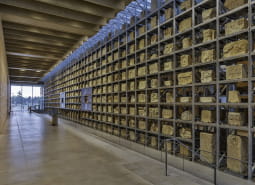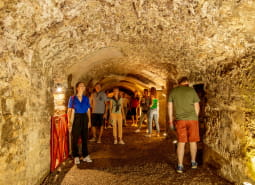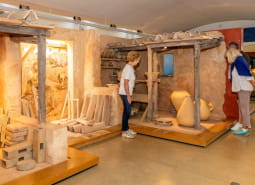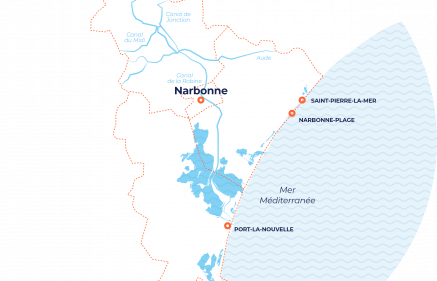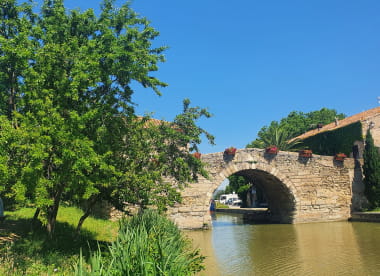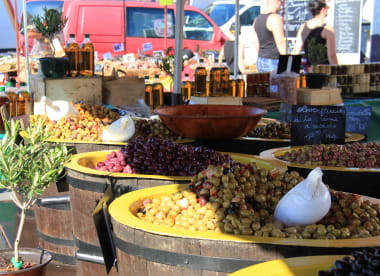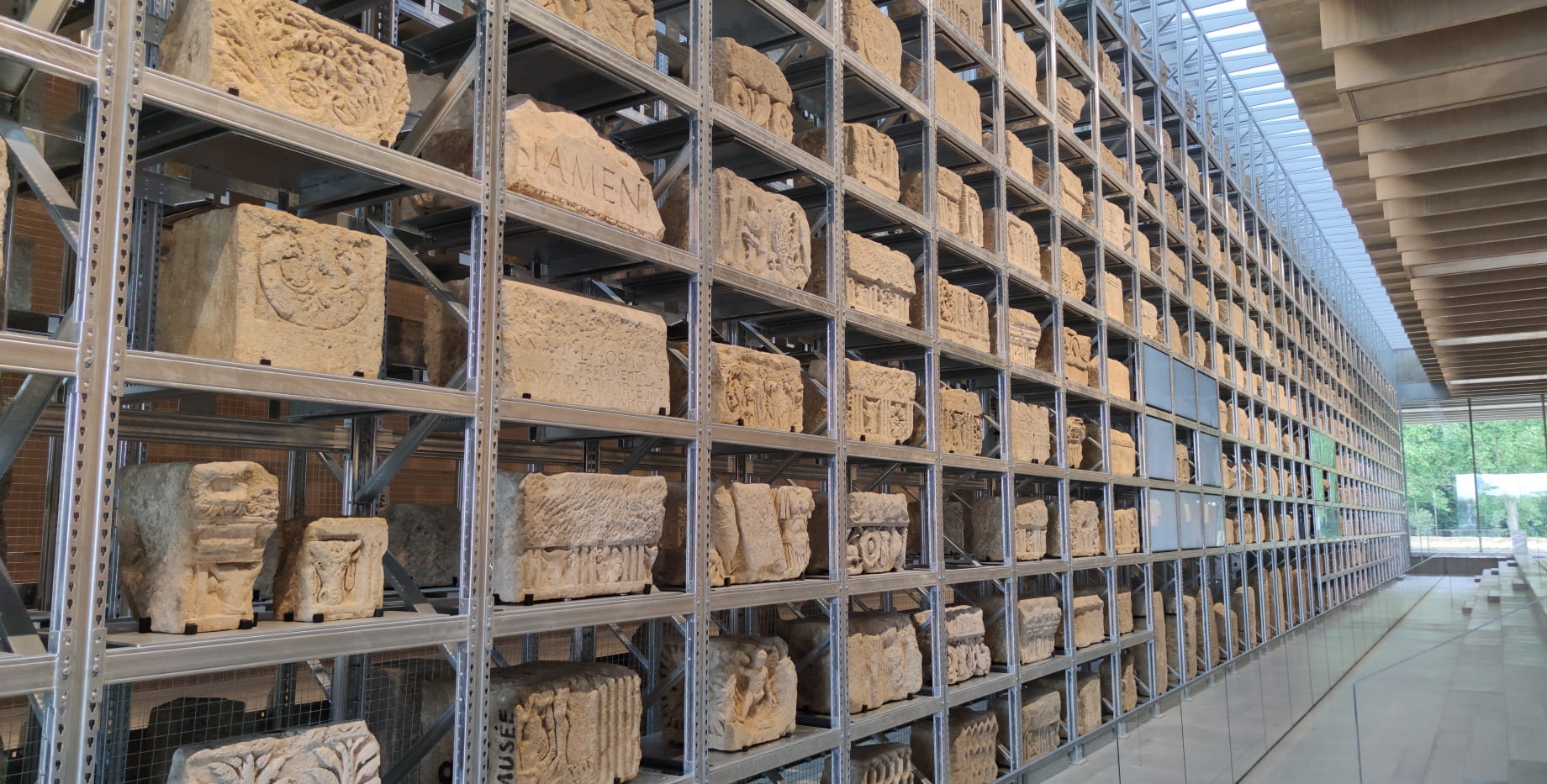
Narbo Via
What I like about museums are the snippets of information, the unexpected anecdotes that give you the big picture! A wink, an etymology, a mysterious archaeological excavation…
And at the Narbo Via museum, almost everything has its own anecdote!
The impressive stone wall
The lapidary wall is the centrepiece of the Narbo Via museum.
Even the name is impressive! The stones are equally amazing: ancient inscriptions, figurative representations, architectural blocks... you will see friezes, extraordinary silhouettes... But the technical genius behind the wall is almost as impressive!
Unique in the worldInspired by the famous giant automated Amazon warehouses, it is the only museum of its kind.
The system of arms that move the massive blocks of stone had to be strengthened as well as having the necessary finesse and delicacy to move these fragile ancient blocks.
Each block must be handled with painstaking care. Most are made of limestone and are several centuries old, and would therefore not stand up to any rough treatment.

- 2000 : the age of most of these monumental blocks
- 400 : this is the average weight in kilos of each block on display
- 760 : this is the number of blocks in the museum. 420 are exhibited each day, and the others are in reserve for analysis and interpretation before it is their turn to be exhibited
- 70m x 10m : the measurements of the dimensions of the Narbo Via Museum lapidary wall
- 10 : the number of blocks on permanent display through screens in front of the wall. These stone blocks are shown in their original location
Did you know?
While you visit, two researchers are working continuously on the pieces in reserve: painted plaster, inscriptions, architectural blocks to be reconstituted...
Graffiti on the blocks
Don't mistake the spray paint on some blocks for graffiti! It’s a method of classification!
When the ramparts were dismantled, the most interesting blocks were marked with the word "museum" to ensure they would be included in future collections, while others were simply numbered.
When you have finished admiring the lapidary wall and its 400 blocks, go into the exhibition room and turn right!


A blocked pipe
It is the oldest piece in the museum, however, without an incredible coincidence, we would not be able to admire this incredible bust of Hercules!
During the initial excavation of the "La Nautique" site, the archaeologists decided to explore some old pipes, one of which was blocked by an unremarkable piece of stone, which they decided to remove.
On the other side they found... Hercules, recognisable by the lion skin he is wearing.
Recycling and sustainable development …
Our ancestors were already good at recycling! Waste not, want not, particularly a beautiful piece of marble!
Once you reach an ornate marble carving featuring a bull's skull and a frieze of fruit, venture around the back of this representation of sacrifice and abundance!
You will find a coats of arms of the consuls of Narbonne that was engraved in this block some centuries later.
The real stars of the museum
Busts, sculptures, engravings, paintings, illustrated characters that show us the fashions of their time.
FashionistasWith the family or in public, sculpted portraits were very common and kept memories alive. They also indicate a certain level of fame, wealth and social rank.
This series of sculpted heads shows us the hair styles of the day: straight fringes for men and "honeycomb" hairstyles for women in the first century and the "Mark Anthony" hairstyle with a beard at the end of the 3rd century or clean shaving 200 years earlier.
Every stele has a story
Funerary steles often mentioned the occupations of the deceased, but they were certainly not all as meaningful as those as those you will see here:
- The apple merchant calling out to his customers "Ladies, ladies, my (apples)",
- The miller who had his stele sculpted during his lifetime to honour his wife and daughter,
- The juggler and his balls that almost seem to jump out of this huge stele,
- Marcia Donata, the Milanese, a rare stele of a single woman (she was more often shown with her husband), she has a book in her hand and was probably a merchant.
You may have noticed the stele of this couple holding hands with a very expressive look? The contours of the sculpture are extremely marked which is a peculiarity of the sculptures from Narbonne that makes them identifiable all around the Mediterranean!





Lastly, I cannot finish this story without a nod to this reconstituted sculpture of this man on his feet which is reminiscent of a great work of contemporary art.
Do you know which?
Keep exploring the Côte du Midi with the activities we have tried and tested for you!






